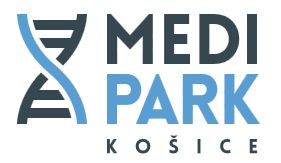Key Features
What is a credit system?
A credit system is a systematic way of describing an educational programme by attaching credits to its components. The definition of credits in higher education systems may be based on different parameters, such as student workload, learning outcomes and contact hours.
What is ECTS?
The European Credit Transfer and Accumulation System is a student-centred system based on the student workload required to achieve the objectives of a programme, objectives preferably specified in terms of learning outcomes and competences to be acquired.
How did ECTS develop?
ECTS was introduced in 1989, within the framework of Erasmus, now part of the Socrates programme. ECTS is the only credit system, which has been successfully tested and used across Europe. ECTS was set up initially for credit transfer. The system facilitated the recognition of periods of study abroad and thus enhanced the quality and volume of student mobility in Europe. Recently ECTS is developing into an accumulation system to be implemented at institutional, regional, national and European level. This is one of the key objectives of the Bologna Declaration of June 1999.
Why introduce ECTS?
ECTS makes study programmes easy to read and compare for all students, local and foreign. ECTS facilitates mobility and academic recognition. ECTS helps universities to organise and revise their study programmes. ECTS can be used across a variety of programmes and modes of delivery. ECTS makes European higher education more attractive for students from other continents.
What are the key features of ECTS?
· ECTS is based on the convention that 60 credits measure the workload of a full-time student during one academic year. The student workload of a full-time study programme in Europe amounts in most cases to 36/40 weeks per year and in those cases one credit stands for 25 to 30 working hours. Workload refers to the notional time an average learner might expect to complete the required learning outcomes.
· Credit is also a way of quantifying the outcomes of learning. Learning outcomes are sets of competences, expressing what the student will know, understand or be able to do after completion of a process of learning, short or long. Credits in ECTS can only be obtained after completion of the work required and appropriate assessment of the learning outcomes achieved.
· The allocation of ECTS credits is based on the official length of a study programme cycle. The total workload necessary to obtain a first cycle degree lasting officially three or four years is expressed as 180 or 240 credits.
· Student workload in ECTS includes the time spent in attending lectures, seminars, independent study, preparation for, and taking of, examinations, etc.
· Credits are allocated to all educational components of a study programme (such as modules, courses, placements, dissertation work, etc.) and reflect the quantity of work each component requires in relation to the total quantity of work necessary to complete a full year of study in the programme considered.
· The performance of the student is documented by a local/national grade. It is good practice to add an ECTS grade, in particular in case of credit transfer. The ECTS grading scale ranks the students on a statistical basis. Therefore, statistical data on student performance is a prerequisite for applying the ECTS grading system. Grades are assigned among students with a pass grade as follows:
A best 10%
B next 25%
C next 30%
D next 25%
E next 10%
A distinction is made between the grades FX and F that are used for unsuccessful students. FX means: “fail- some more work required to pass” and F means: “fail – considerable further work required”. The inclusion of failure rates in the Transcript of Records is optional.
What are the key documents of ECTS?
· The regular Course Catalogue of the institution to be published in two languages (or only in English for programmes taught in English) on the Web and/or in hard copy. The Course Catalogue must contain the items of the checklist attached to this document, including information for host students from abroad.
· The Learning Agreement contains the list of courses to be taken and agreed upon by the student and the responsible academic body of the institution concerned. In case of credit transfer, the Learning Agreement has to be agreed upon by the student and the two institutions concerned before the student’s departure and to be updated immediately when changes occur.
· The Transcript of Records documents the performance of a student by showing the list of courses taken, the credits gained as well as the local grades and possibly ECTS grades awarded. In case of credit transfer, the Transcript of Records has to be issued by the home institution for outgoing students before departure and by the host institution for incoming students at the end of their period of study.
How to obtain the ECTS Label?
· An ECTS label will be awarded to institutions, which apply ECTS the proper way in all first and second cycle degree programmes. The label will raise the profile of the institution as a transparent and reliable partner in European and international cooperation.
· The criteria for the label will be: a Course Catalogue (online or hard copy) in two languages (or only in English for programmes taught in English), use of ECTS credits, samples of learning Agreements, Transcripts of Records and proofs of academic recognition.
· An application form will be published on the web site of the Socrates, Leonardo & Youth TAO in June 2003 (www.socleoyouth.be) The application deadline will be Nov 1st, 2003 (and annually thereafter). The label will be valid for three academic years, starting 2004/2005. The list of institutions in possession of the label will be published on the Europa web site.
What is the Diploma Supplement?
The Diploma Supplement is a document attached to a higher education diploma providing a standardised description of the nature, level, context, content and status of the studies that were pursued and successfully completed by the graduate. The Diploma Supplement provides transparency and facilitates academic and professional recognition of qualifications (diplomas, degrees, certificates etc.). A Diploma Supplement label will be awarded to institutions, which deliver a Diploma Supplement, to all graduates in all first and second cycle degree programmes, in accordance with the structure and recommendations to be found on the web site below.
Where to find more information on ECTS?
More information on ECTS and the Diploma Supplement can be found on the Europa web site of the European Commission, including the list of ECTS/DS Counsellors and some guidance on how to make a good Course Catalogue: http://europa.eu.int/comm/education/socrates/ects.html
European Credit Transfer and Accumulation System (ECTS)
- Documents
- ECTS Information Packages














